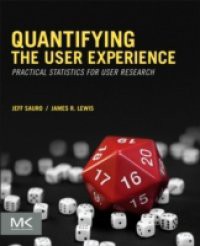Quantifying the User Experience: Practical Statistics for User Research offers a practical guide for using statistics to solve quantitative problems in user research. Many designers and researchers view usability and design as qualitative activities, which do not require attention to formulas and numbers. However, usability practitioners and user researchers are increasingly expected to quantify the benefits of their efforts. The impact of good and bad designs can be quantified in terms of conversions, completion rates, completion times, perceived satisfaction, recommendations, and sales. The book discusses ways to quantify user research; summarize data and compute margins of error; determine appropriate samples sizes; standardize usability questionnaires; and settle controversies in measurement and statistics. Each chapter concludes with a list of key points and references. Most chapters also include a set of problems and answers that enable readers to test their understanding of the material. This book is a valuable resource for those engaged in measuring the behavior and attitudes of people during their interaction with interfaces.Provides practical guidance on solving usability testing problems with statistics for any project, including those using Six Sigma practicesShow practitioners which test to use, why they work, best practices in application, along with easy-to-use excel formulas and web-calculators for analyzing dataRecommends ways for practitioners to communicate results to stakeholders in plain English Resources and tools available at the authors' site: http://www.measuringu.com/

